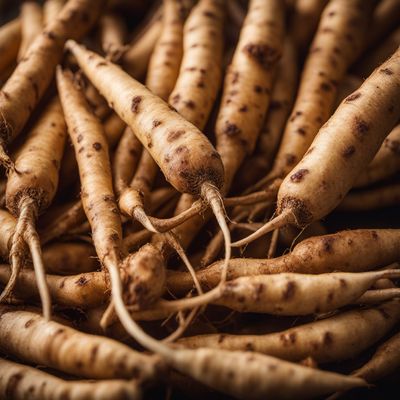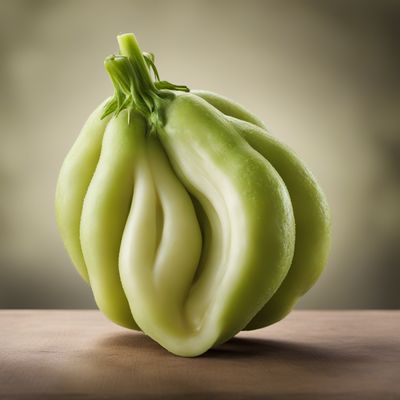
Ingredient
Tannias
Versatile Tropical Tubers
Tannias, also referred to as Xanthosoma sagittifolium, are versatile tropical tubers that are highly valued for their starchy and nutritious qualities. They have a rough, brown outer skin and a creamy white or yellow flesh. Tannias are commonly used as a staple food in tropical regions, where they are prepared in a variety of ways, including boiling, frying, or baking. They have a mild, earthy flavor and a slightly sticky texture when cooked.
Origins and history
Tannias have a long history of cultivation in tropical regions, particularly in Central and South America, the Caribbean, and parts of Africa and Asia. They have been a staple food for indigenous communities for centuries, providing a reliable source of carbohydrates and nutrients. Tannias were introduced to other parts of the world during the colonial era and have since become an important crop in many tropical countries. Today, they are enjoyed in various traditional dishes and are gaining recognition for their nutritional value and culinary versatility.
Nutritional information
Tannias are a good source of carbohydrates, dietary fiber, and essential nutrients such as potassium and vitamin C. They are relatively low in calories and fat, making them a healthy addition to a balanced diet. Tannias also contain antioxidants and other beneficial compounds that contribute to their nutritional value.
Allergens
Tannias are not known to be common allergens. However, individuals with sensitivities to other tubers or root vegetables should exercise caution and consult with a healthcare professional if unsure.
How to select
When selecting tannias, choose ones that are firm and free from soft spots or blemishes. The skin should be intact and not overly wrinkled. Avoid tannias with a strong odor, as this may indicate spoilage. If purchasing from a farmers market or specialty store, look for locally grown or organic options for the freshest and highest quality tubers.
Storage recommendations
To prolong the shelf life of tannias, store them in a cool, dark place with good ventilation. Avoid storing them in the refrigerator, as the cold temperatures can negatively affect their texture and flavor. Tannias can be kept for several weeks if stored properly.
How to produce
Tannias can be grown in tropical or subtropical regions with warm temperatures and well-drained soil. They are typically propagated through corms or suckers, which can be planted in prepared beds or containers. Adequate sunlight, regular watering, and proper soil fertility are essential for successful cultivation. It is recommended to consult local agricultural resources or experts for specific guidance on growing tannias in your area.
Preparation tips
Tannias can be prepared in various ways, depending on personal preference and culinary traditions. They can be boiled and mashed to create a creamy side dish or used as a base for soups and stews. Tannias can also be sliced or grated and fried to make crispy fritters or chips. Additionally, they can be baked or roasted for a healthier alternative. Tannias are a versatile ingredient that can be incorporated into both savory and sweet recipes, adding a unique texture and flavor to dishes.
Culinary uses
Tannias are commonly used in tropical cuisines, particularly in Central and South America, the Caribbean, and parts of Africa and Asia. They are featured in traditional dishes such as sancocho, callaloo, or cocoyam porridge. Tannias can also be found in international markets or specialty stores catering to tropical ingredients. They are less commonly available in mainstream supermarkets outside of tropical regions.
Availability
Central and South America, the Caribbean, parts of Africa, and Asia
More ingredients from this category

Cassava roots
The Versatile Tuber: Cassava Roots

Canna
"The Versatile Wonder: Unveiling the Culinary Potential of Canna"

Konjac roots
The Versatile Wonder: Unveiling the Potential of Konjac Roots

Taros
The Versatile Taro Root

Blue taros
The Vibrant Purple Powerhouse

Chayote roots
The Versatile Vegetable: Chayote Roots